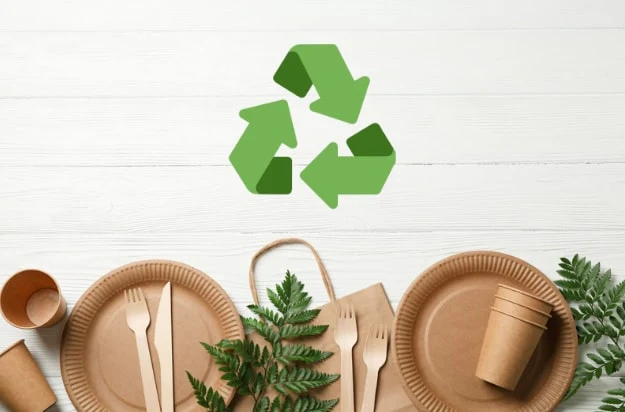The environmental impact of packaging is a growing concern, especially as industries continue to prioritize convenience over sustainability. Packaging plays a critical role in product protection, transportation, and branding, but it also contributes significantly to the global carbon footprint. By adopting sustainable packaging options, businesses can take a vital step toward reducing their environmental impact. At The Packaging Tree, we are committed to helping businesses transition to eco-friendly packaging solutions that minimize their carbon footprint and align with modern sustainability goals.
Understanding the Carbon Footprint of Packaging
The carbon footprint of packaging refers to the total greenhouse gas emissions generated throughout its lifecycle—from the extraction of raw materials to production, transportation, usage, and disposal. Traditional packaging materials, such as plastic and non-recycled cardboard, have a significant carbon footprint due to their reliance on fossil fuels, energy-intensive manufacturing processes, and poor recyclability.
For example:
- Plastic Packaging: Derived from petroleum, plastic is energy-intensive to produce and contributes to significant emissions during its lifecycle. Additionally, its low recycling rate exacerbates the problem.
- Non-Recycled Cardboard: While biodegradable, non-recycled cardboard often involves deforestation and high energy usage during production.
These emissions not only accelerate climate change but also harm ecosystems and biodiversity.
Why Sustainable Packaging Options Matter
Sustainable packaging is designed to reduce environmental impact by utilizing eco-friendly materials, energy-efficient processes, and improved recyclability. Here’s why making the switch matters:
1. Reducing Greenhouse Gas Emissions
Eco-friendly packaging options, such as recycled paper, biodegradable materials, and compostable alternatives, significantly lower emissions. By reusing existing materials or relying on renewable resources, businesses can decrease their dependence on energy-intensive production methods.
2. Minimizing Waste
Sustainable packaging often includes recyclable or compostable components, reducing the amount of waste that ends up in landfills or oceans. This helps curb pollution and promotes a circular economy where materials are reused rather than discarded.
3. Meeting Consumer Expectations
Consumers are becoming increasingly eco-conscious, with many prioritizing brands that demonstrate a commitment to sustainability. By using sustainable packaging, businesses can build trust, enhance brand loyalty, and appeal to a broader customer base.
4. Compliance with Regulations
Governments and regulatory bodies worldwide are implementing stricter rules around packaging waste and carbon emissions. Adopting sustainable packaging ensures compliance and avoids potential penalties.
Sustainable Packaging Solutions from The Packaging Tree
At The Packaging Tree, we provide a wide range of eco-friendly packaging solutions designed to meet the needs of modern businesses. Our sustainable options include:
- Recycled Materials: We offer packaging made from recycled paper and cardboard, reducing the demand for virgin materials.
- Biodegradable Alternatives: Our biodegradable packaging decomposes naturally, leaving no harmful residue behind.
- Lightweight Designs: By optimizing packaging designs, we help reduce transportation-related emissions.
How Businesses Can Transition to Sustainable Packaging
Transitioning to sustainable packaging doesn’t have to be complicated. Here are a few steps businesses can take:
1. Assess Current Packaging Practices
Conduct an audit to identify the environmental impact of your existing packaging. Focus on areas like material sourcing, production processes, and disposal methods.
2. Choose Eco-Friendly Materials
Switch to materials with lower carbon footprints, such as recycled cardboard, plant-based plastics, or compostable alternatives. Collaborate with trusted providers like The Packaging Tree for high-quality options.
3. Optimize Packaging Design
Reduce material usage by designing smaller, lightweight packaging that maintains functionality while minimizing waste.
4. Educate Your Customers
Clearly communicate your commitment to sustainability through packaging labels, social media, and marketing campaigns. Include instructions for proper disposal or recycling to ensure customers play their part in reducing waste.
5. Monitor and Improve
Regularly evaluate the effectiveness of your sustainable packaging efforts and seek opportunities for improvement. Staying informed about new materials and innovations is key to staying ahead.
Conclusion
The carbon footprint of packaging is a pressing issue that demands immediate attention. By embracing sustainable packaging options, businesses can significantly reduce their environmental impact while meeting consumer expectations and regulatory demands. At ThePackagingTree, we are dedicated to providing innovative, eco-friendly packaging solutions that support both your business goals and the planet. Together, we can build a greener future where packaging protects not only products but also the environment.




